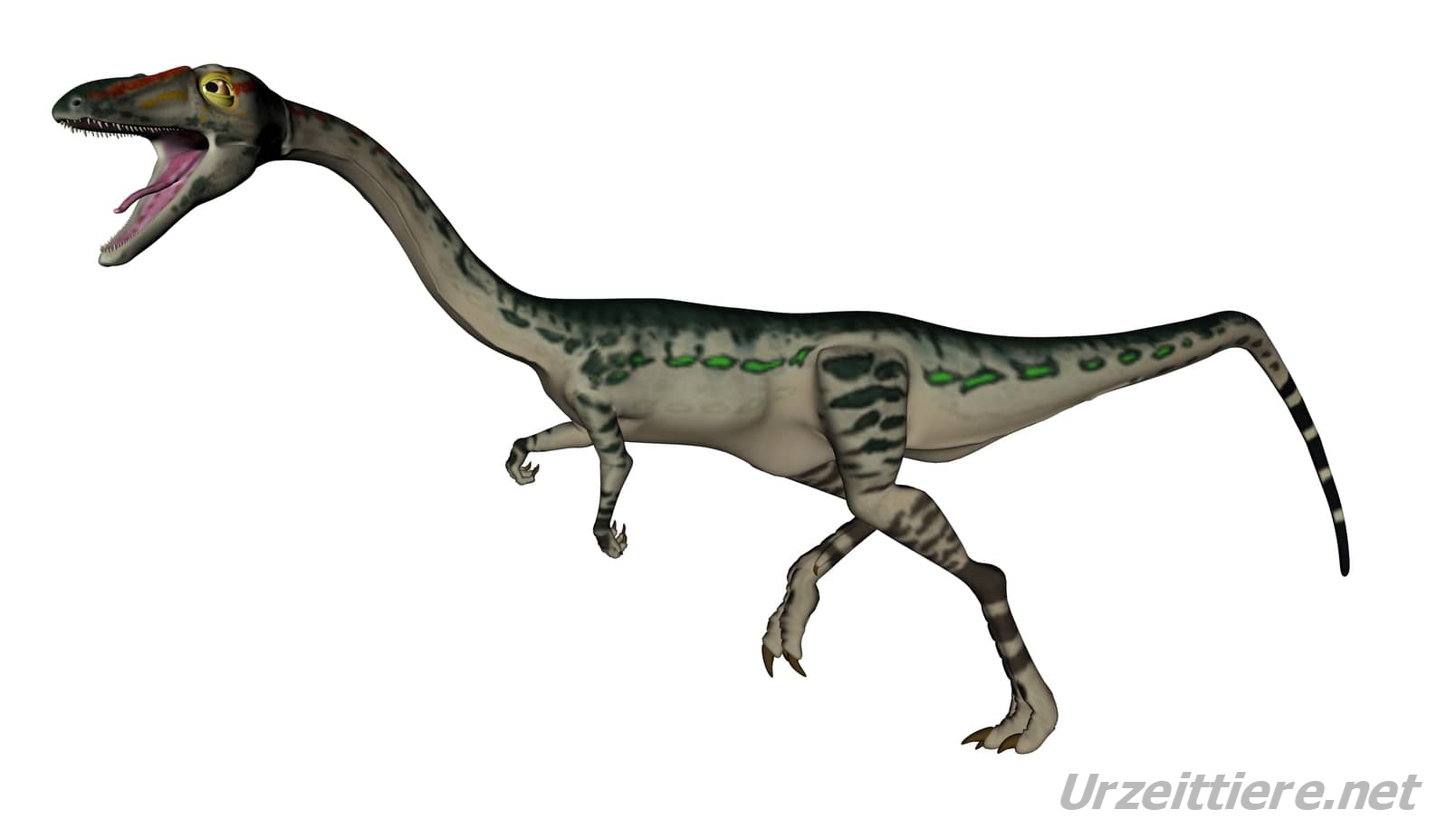
Coelophysis means "hollow form" or "hollow shape", referring to its hollow bones typical of carnivores.
Coelophysis is a very well-known early dinosaur. Scientists have already discovered hundreds of skeletons of this primitive theropod carnivore.
It lived about 216 to 203 million years ago during the late Triassic period. Coelophysis is the oldest known dinosaur in North America. It was a fast and agile runner.
Its head was long and narrow and its jaws were equipped with many small, sharp teeth with sawtooth edges. Perfect for tearing meat from prey.
This dino possessed a very long tail. This formed the counterweight for the part of the body that was in front of the pelvis. Its limbs were slender and relatively long. The neck was longer than its torso.
Coelophysis then became known in 1947, when a massive assemblage of hundreds of skeletons were excavated at Ghost Ranch near Abuquiu, New Mexico.
| Profile | Coelophysis |
|---|---|
| Prehistoric Era | Upper Triassic 228 to 201.3 million years ago |
| Order | Saurischia |
| Suborder | Theropoda |
| Family | Coelophysoidea |
| Tribe | Coelophysidae |
| Genus | Coelophysis |
| Species | Coelophysis bauri |
| Height | 1 meter |
| Length | 2.5 to 3 meter |
| Weight | 15 to 30 kilogram |
| Territory | North America |
In 1889 Edward Drinker Cope named the newly discovered dinosaur genus Coelophysis.
Two years earlier, the type species was still mistakenly thought to be a species of the genus Coelurus.
However, Drinker recognized significant differences from Coelurus and Tanystrophaeus, which led him to name a new genus.
Coelophysis, as is typical of predatory dinosaurs, had blade-like, backward-curved sharp teeth. These were studded with fine serrations on the front and back edges.
It was very agile and fast and hunted a variety of animals including early small lizards and insects. Other prey included tiny mammal-like reptiles and small herbivorous dinosaurs such as Technosaurus.
Its sharp grasping claws and teeth helped it hold onto and kill food.
Coelophysis bauri lived mainly in warm, moist coastal areas in what is now southwestern North America. This region was once covered with streams, ponds, ferns, and tropical plants. It was surrounded on all sides by mountains with evergreen trees 30 to 60 meters high!
Because of the finding of massive aggregations of Coelophysis skeletons, scientists now suspect that it may have also hunted in packs to take down larger prey.
Coelophysis was a slightly built dinosaur. It measured up to 3 meters in length and more than a meter high at the hips.
Its estimated weight was between 15 kg and 20 kg.
Its eyes were directed forward, allowing it to see stereoscopically.
Scleral rings could be detected in some specimens. They resemble the bone rings that support the eyes of present-day birds, fish, or some reptiles. This suggests that, compared with sclerosis rings of present-day animals, Coelophysis was a visually oriented predator.
It probably had excellent depth perception and a visual range similar to that of modern birds of prey. Furthermore, it can be concluded that it was probably diurnal and thus had round rather than slit pupils.
Coelophysis probably reached sexual maturity between the ages of two and three. He was fully grown with a length of just over 3 meters in his eighth year.
Although very many fossils of Coelophysis have already been found, no skin impressions have been found so far. Thus, it is not known whether he had feathers or not. If that were the case, Coelophysis would be one of the earliest known feathered dinosaurs.
Image source:
Size: Petrified Forest from Petrified Forest, USA, Public domain, via Wikimedia Commons
Skeletons: Bradley Gordon, CC BY 2.0 https://creativecommons.org/licenses/by/2.0, via Wikimedia Commons
Restoration hypothetical: Park Ranger, artist Jeff Martz[1], Public domain, via Wikimedia Commons
Coelophysis animatronics model,: Firsfron, CC BY-SA 3.0 http://creativecommons.org/licenses/by-sa/3.0/, via Wikimedia Commons